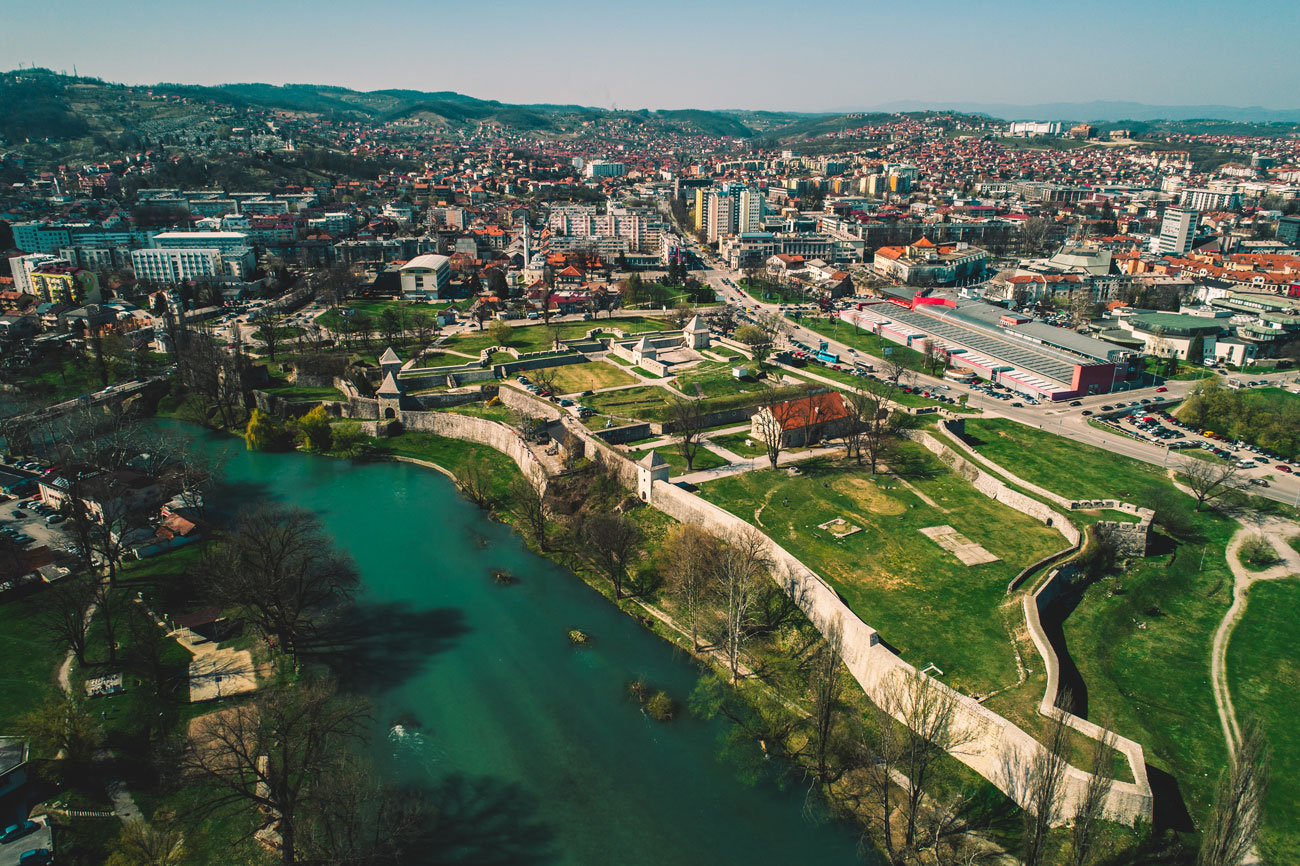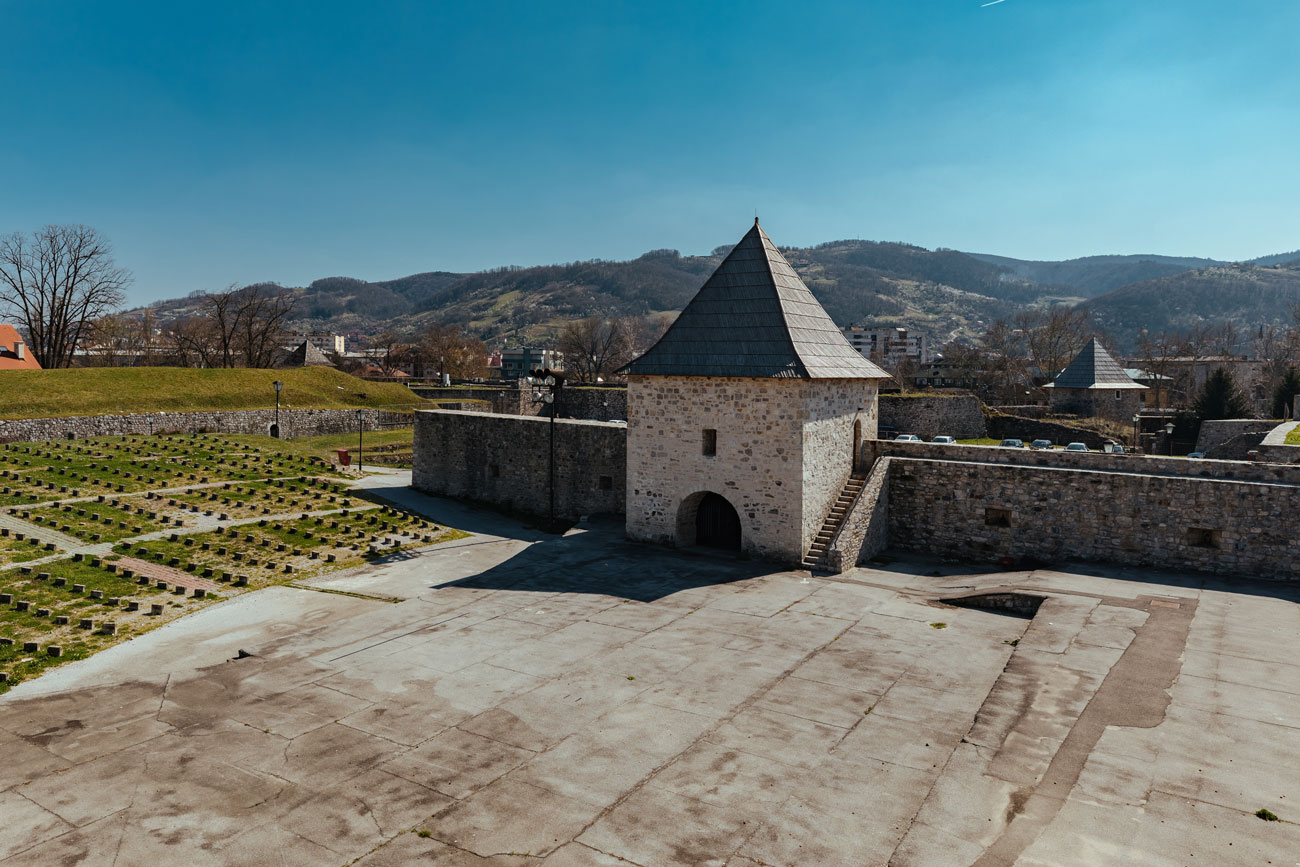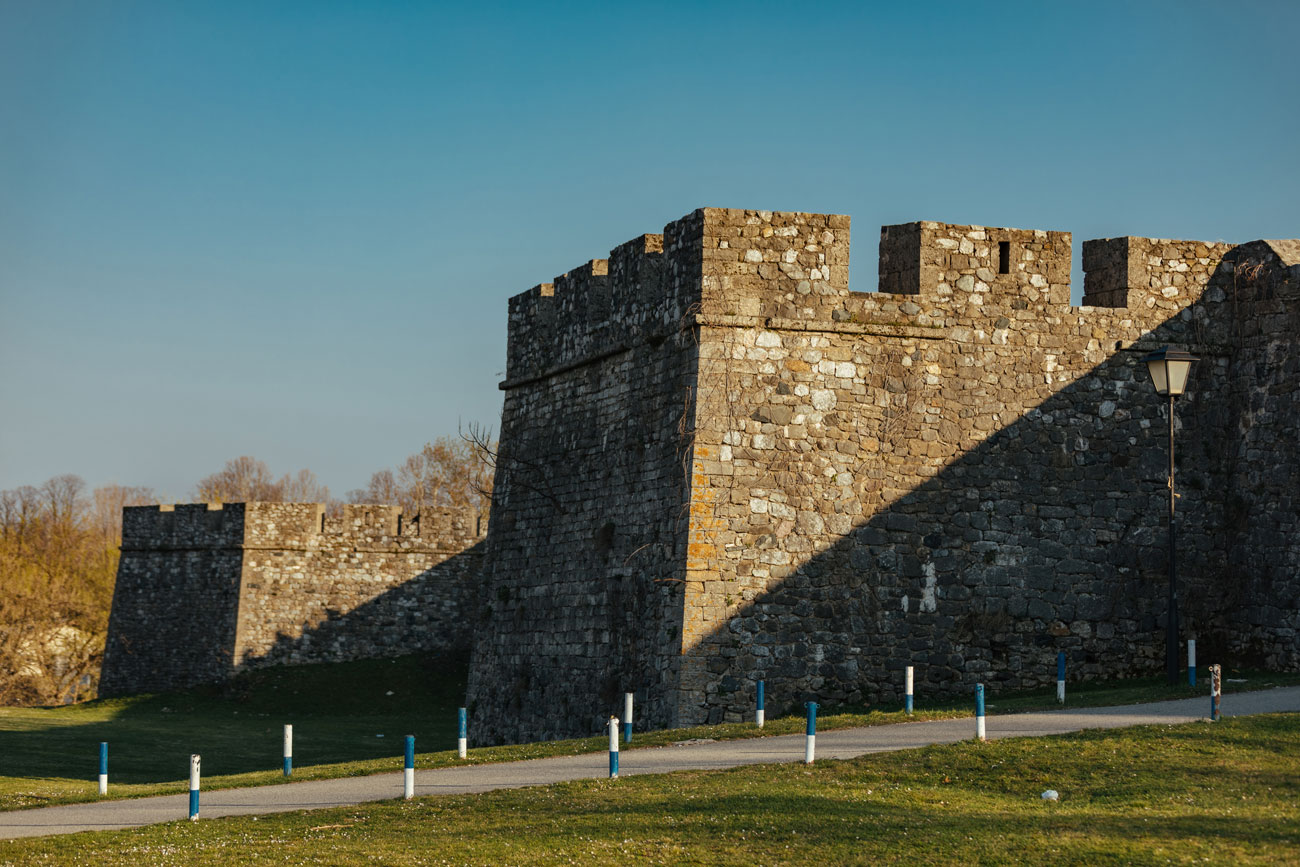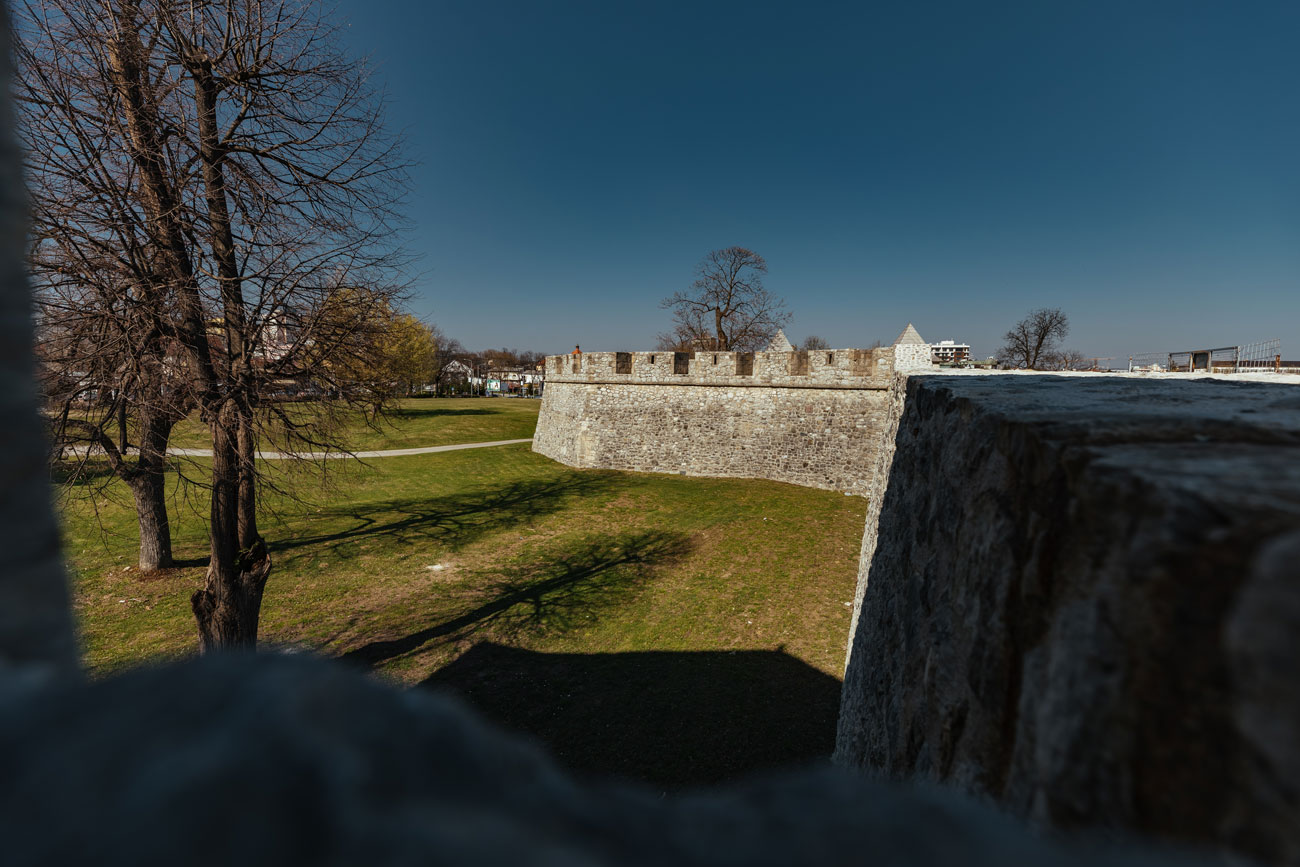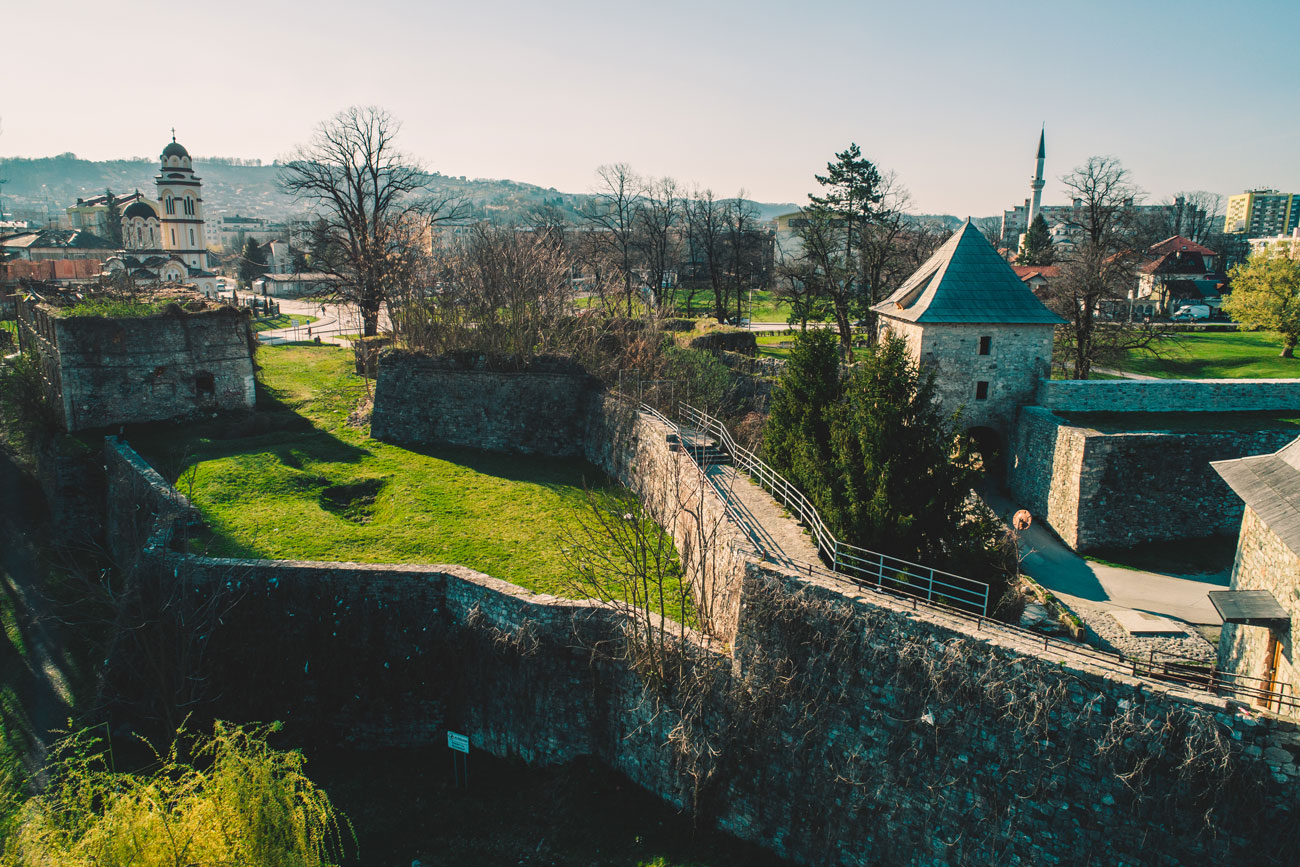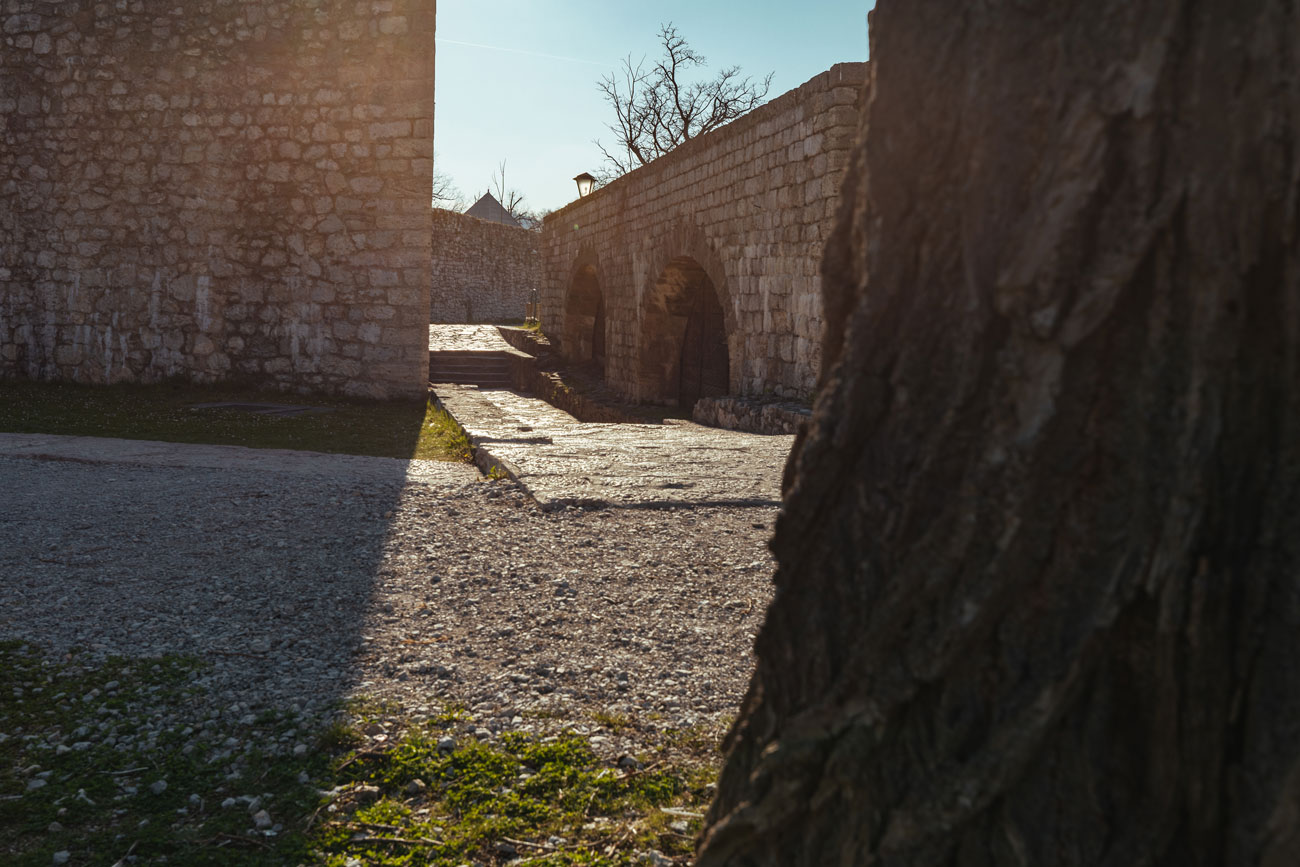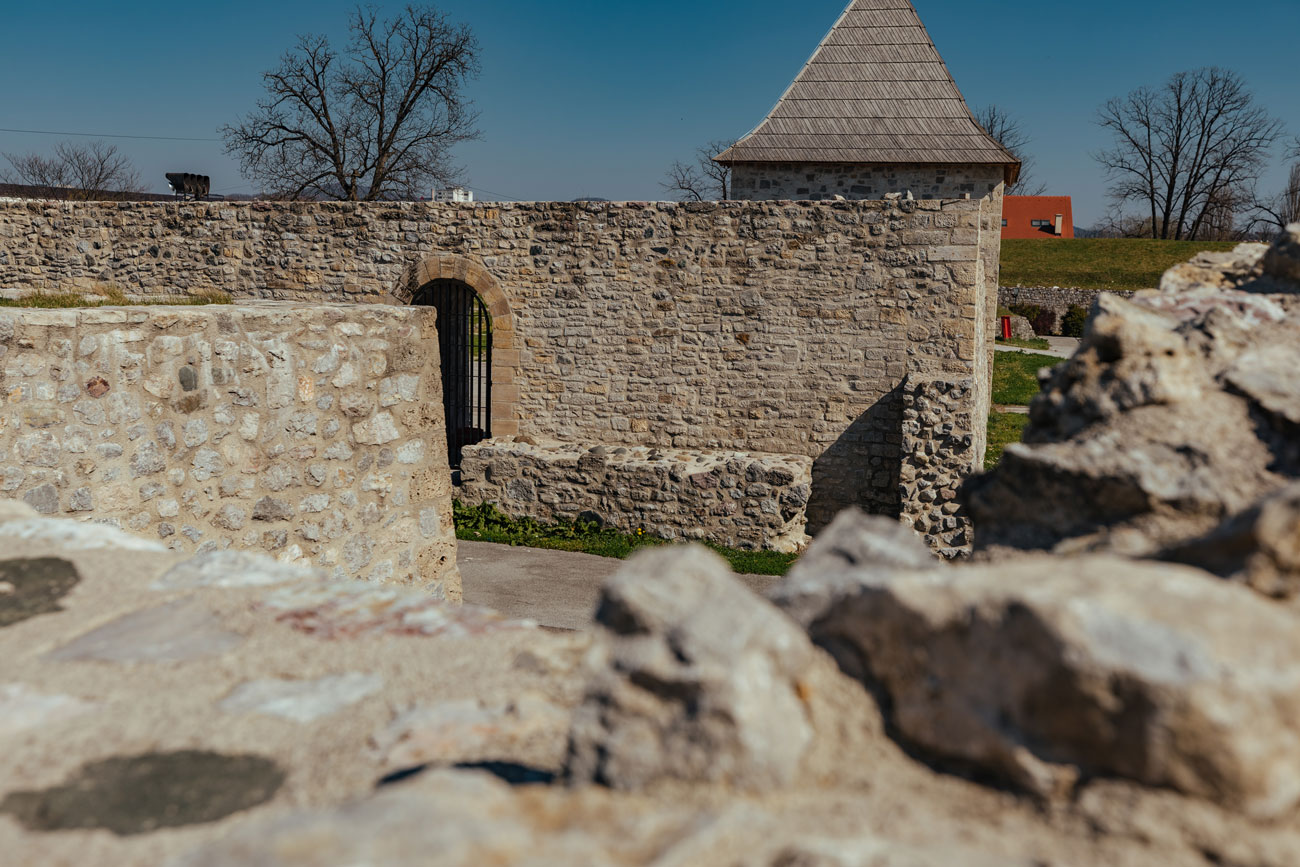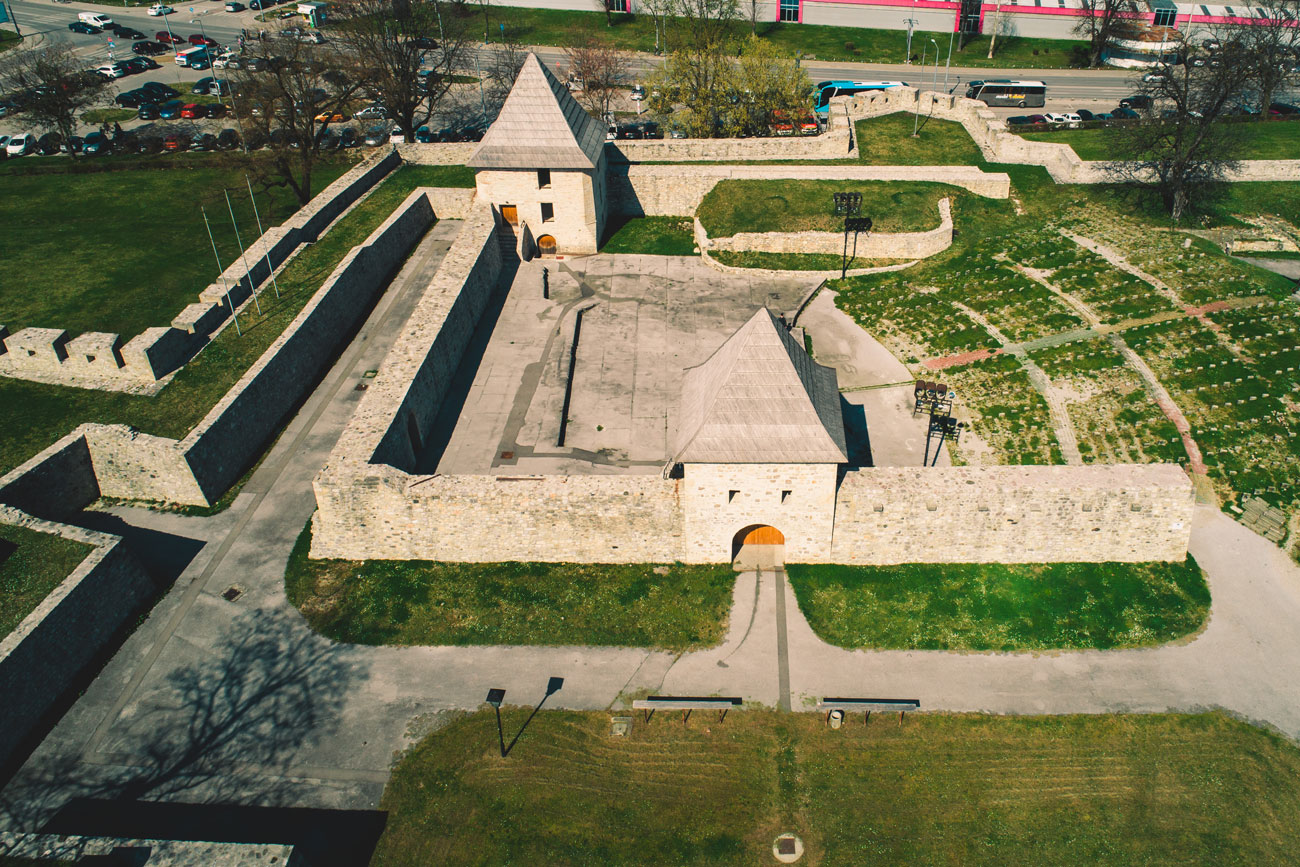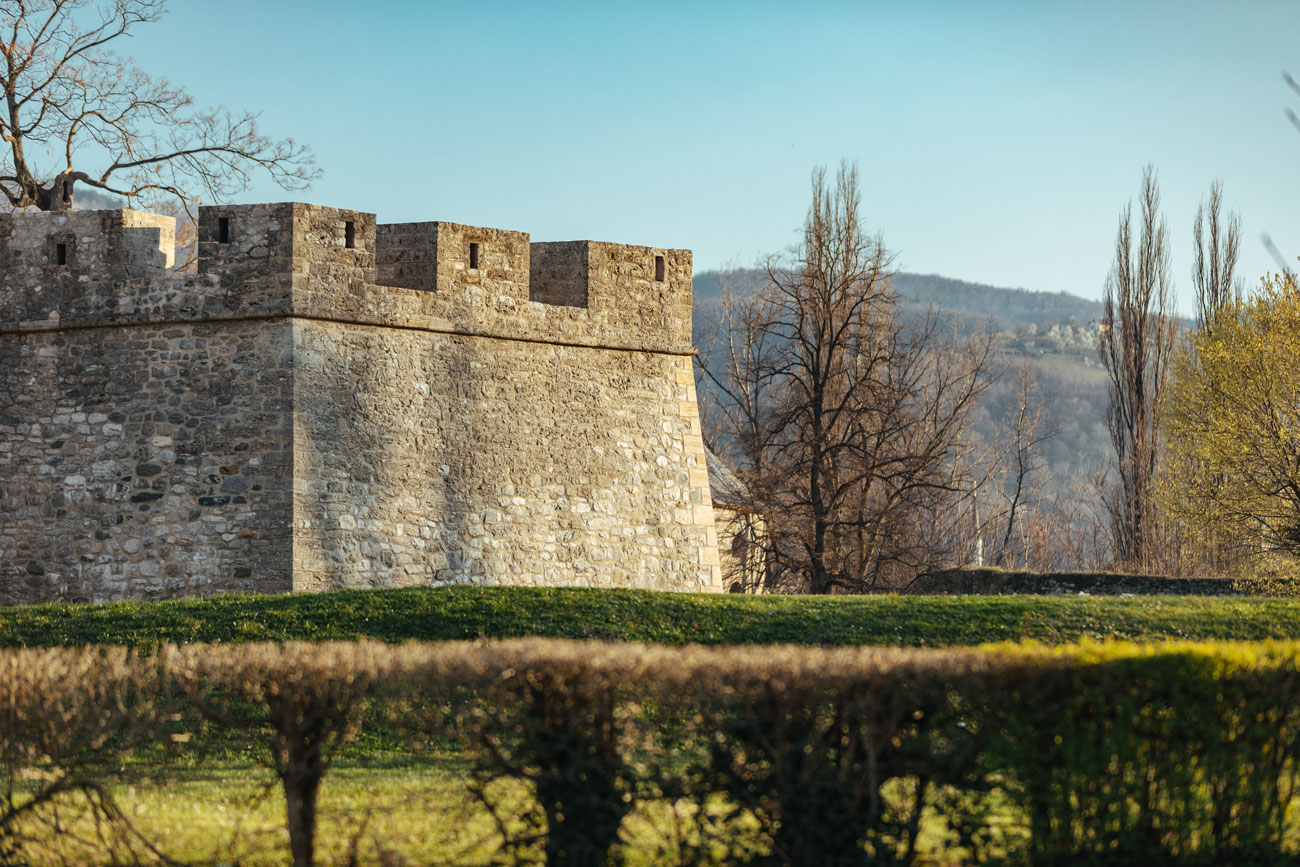Everyone in Banja Luka could see that the girl was a worthy descendant from the Sokolović family of viziers and pashas, warriors and constructors of the Empire and even deeper older lines of strong men and women.
The only thing was that she had no freedom to choose.
The beauty could clearly see the future from the fortifications of the fortress in the heart of Banja Luka. She knew that her future was outside her home town on dreamy rivers, outside the walls of the house where each step was monitored by the family and guardians.
It was exactly there, where the spirit of the Balkans meets eastern culture and western influences that a foreigner in uniform arrived. Handsome. Kind. A true gentleman.
She observed him from afar and had a premonition. Her premonition was confirmed when she got closer to him. She wanted to give herself to him, despite the strict family rules.
The world of beautiful Safikada suddenly become different. Eventually, it became a world without her. A world of eternal tragedy.
The young people in Banja Luka have learnt two things from Safikada’s fate. One is that worlds don’t meet, but collide. The other is that love equals life.
Legends
Even the most famous legend from Banja Luka is related to Kastel Fortress. The legend concerns a beautiful girl called Safikada, who has become a symbol of unconditional love and faithfulness.
The story of Safikada, like many other legends and tales, has several versions. There are also many versions related to her ancestry: one claims that Safikada was a granddaughter of the famous Ottoman statesman and military commander Ferhad Pasha Sokolović (1530-1590), while others suggests she was Kahrimanović’s daughter or that she belonged to one of the later noble families in the city.
The timeframe of the legend is wide: from XVI to XIX century. According to one version, Safikada fell in love with a soldier from the Ottoman army, which would correspond to late XVI, XVII or XVIII century, while other sources state that she was in love with a soldier from the hostile Austro—Hungarian army, which corresponds to the late XIX century.
However, the gist of the ill-fated love story is always the same: beautiful Safikada committed suicide because the love between her and a soldier stationed in Kastel Fortress in Banja Luka had never been realised.
Safikada lived in a house surrounded by a tall wall. Since she came from a wealthy family, she wasn’t allowed to go for a walk unescorted and in those days families used to choose husbands for their young girls. Safikada somehow managed to meet a soldier and fall in love with at first sight.
Their love was mutual, but had to be kept a secret. One day, Safikada’s loved one was transferred to a battlefield far away and she soon received news of his death.
Being unable to deal with the pain, Safikada put on a wedding dress, went to the fortress and stood in front of a gun that would fire each day exactly at noon. She was standing there as the fuse was burning and said, “I shall be faithful to you” and killed herself. (There is no historic evidence that there was a gun which would fire at noon, which makes this part of the story controversial).
According to another version, Safikada was killed by an Austrian soldier, since she disobeyed his warning not to enter the fortress. A third version suggests that she committed suicide by drowning in the Vrbas River, in front of Kastel Fortress.
However, reality is sometimes deeply connected with legends. On the route between the Ferhadija Mosque and Kastel Fortress there is a simple sarcophagus, which is believed to be Safikada’s coffin. The archaeological research organised by archaeologist Boris Graljuk in 1987, established that judging by the structure and processing of the stone, use of crampoons and the monumentality of the tombstone, the grave dated back to the end of XVI century, which is the period of Ferhad Pasha Sokolović’s reign, which means we can’t exclude a possibility that the tombstone is really connected with his family – his granddaughter, for example.
Today, Safikada’s grave is a popular place where different generations of people from Banja Luka light candles with a wish to find happiness in love.
In honour of this legend, Muharem Insanić composed an opera, “Safikada”, based on a libretto written by Stanko Podgorelec, which premiered in 2011 at the National Theatre in Banja Luke, as the first opera staged by this institution.
Cultural institutions
- Website: banjaluka-tourism.com
The Stone Building of Kastel Fortress used to be the headquarters of the Institute for Protection of Cultural-Historic and Natural Heritage of the Republic of Srpska in 1976-2009.
In 2013-2014, the Stone Building was renewed using IPA funds. The works saw the building redesigned and turned into a gallery, run by the “Banski dvor” Cultural Centre.
Cultural events
Demofest Music Festival
- Website: demofest.org
“Demofest“ is a unique regional music competition and festival, regularly organised since 2008. The festival offers up-and-coming musicians from the territory of former Yugoslavia a chance to prove their worth on stage and, hopefully, remain on it for a while. Over the years, Banja Luka has proven that this is a project the whole region can count on. The Media Cornerof the festival has seen over 300 media crews from the countries of former Yugoslavia. The competition segment includes 30 bands. The first festival, held in 2008, received applications from 192 bends, while the latest one boasted applications from 471 bends. The jubilee festival also featured an additional stage, so that 50 bands could take part in it.
“Demofest“ is now one of the most successful festivals in this part of Europe and is also listed by UNESCO as a project of special importance for connecting and developing cultures in European countries. In 2016, it was nominated at the UK Festival Awards in the category of “Best Oversees Festival”, while the following year it was nominated for the same award, but this time in a different category – “Best Medium-Sized Festival”.
Kastel Rock Fest
The first “Kastel Rock Fest“, organised under the name of “The Month of Music”, was held in 2003. It is organised on the area belonging to Kastel Fortress. This festival presents and promotes rock music culture. The festival also promotes Kastel Fortress as cultural heritage and one of the most renowned sites in Banja Luka.
Despite a four-year-long break, “Kastel Rock Fest” is one of the oldest festivals in Banja Luka, aiming to preserve the tradition of rock-and-roll sound. The festival has featured, among others, Lenny Kravitz, “Apocalyptica”, “Franz Ferdinand” and many others.
Freshwave Festival Electronic Music Festival
- Website: freshwavefestival.com
“Nektar FreshWave Festival” is the largest electronic music festival in Bosnia and Herzegovina. It was first organised in 2012 at Kastel Fortress.
The visitors have an opportunity to listen to the most relevant performers of electronic music from the region, as well as some international stars.
“FreshWave Festival” also strives to support and preserve the national e-music scene, so young and emerging talents also get a chance to present their work.
Kozara Ethno Festival International Event
The “Kozara Ethno” International Festival has been organised since 2005 by the “Piskavica” Cultural-Artistic Society and the Tourist Organisation of Banja Luka. The first part of the festival is held in the village of Piskavica, at the foot of the Kozara mountain, while the second part – festival of international ethno music – is held at Kastel Fortress.
The basic idea of the festival is to present traditional customs, culture and national cuisine.
The 14thfestival (29thJune – 2ndJuly 2018) gathered both domestic performers and those from India, Mexico, Belarus, Cyprus, Slovenia, Croatia and Serbia. The festival also includes a meeting of folklore dancers, a parade through the centre of Banja Luka, traditional sports, etc.
The festival has a specific theme each year.
“Kastrum“ International Chivalry Festival
The first international chivalry festival “Kastrum” was held at Kastel Fortress between 1stand 3rdJune 2018. The visitors had an opportunity to see fights in full armour, European fighting without armour, modern fencing, interesting dances with fire and swords, while members of regional equestrian clubs demonstrated their skills in handling weapons while riding.
Apart from an exhibition of old crafts, there are workshops on chivalry for children and adults: puppet-making, calligraphy, wizardry, workshops dedicated to making swords and shields, fencing school and other events.
For those a bit older, there is an archery tournament, as well as a tournament in bohurt – a relatively new sport that is taking Europe by storm and which encompasses fights using blunt metal weapons. The fighters are dressed in armours, which are made in accordance with historical standards and so are their weapons. The blows can be given to any part of the body (within the limits set by certain rules and regulations). Wrestling and similar technics are allowed. Unlike battle re-enactments that can be seen at various mediaeval festivals, bohurt includes full-contact fights between two or more fighters and trained umpires with experience in martial arts.
The organiser of the festival is the chivalric order “Guardians of St. George’s Spear”, while the city of Banja Luka supported the event within the scope of the “Spring in Banja Luka” programme.
Tourist facilities
“Kazamat“ traditional food restaurant
One of the most famous restaurants in Banja Luka, “Kazamat”, is located in a part of the casemate at Kastel Fortress. The food is prepared in a traditional manner and served in an ambiance that is at the same time several centuries old and conveniently modern, with a terrace overlooking the river.
History
Due to frequent wars between Austria and the Ottoman Empire in the late XVII and early XVIII century, the fortress was expanded to resemble the fortresses in the plain across the Sava River (so-called Vauban system) between 1712 and 1714. It was then that it got its present trapeze-like, multi-angle shape, with three parts of the yard of different sizes, nine bastions, six towers, three entrance gates, underground passages and a moat on the north and west side. The construction works continued in XIX century. One of the public baths in Banja Luka was built within the fortress in 1826, the so-called Military bath.
The only facility for military purposes of significant size from that period was built adjacent to the southwest rampart around 1865. It was a military barracks, located in front of the first bastion on the very bank of the Vrbas River, on a plateau with a sub-wall made of tufa. Most changes related to the urban planning in Banja Luke took place in the last 4-5 decades of the Ottoman rule. Those changes were witnessed by explorers and were also noted more precisely in a survey map, which was created by the new Austro-Hungarian authorities in 1880-1884.
In the period before the Austro-Hungarian occupation, the fortress did not experience modernisation. It seems to have been severely damaged in the middle of XIX century. The Austro-Hungarian rulers were not particularly interested in modernisation of an old fortress and its use for military purposes. One of the rare facilities of significant size built by the new authorities is the so-called Stone Building.
During World War II, the fortress was bombed and many facilities were damaged, while in the period between the end of the war and 1959 Kastel was used by the Yugoslav People’s Army for military purposes.
The total area surrounded by ramparts is 26,610 m2, with additional 21,390 m2 outside the walls. Ramparts, towers and bastions of Kastel Fortress was build using several types of stones, joint using different methods and laying patterns, which suggests there were several phases in the construction period. The fortress was severely damaged in the earthquakes in 1969 and 1981. Over the past four decades, a number of projects have been designed and implemented in order to renew and reconstruct certain parts of the fortress.
Pursuant to the decision no. 726/50 from 1950, the fortress was declared a cultural heritage site of the first category in the SFRY, while in 2004 it was declared a national monument of Bosnia and Herzegovina.
The fortress has been undergoing reconstruction in 21stcentury using the pre-accession funds of the EU. The first phase of reconstruction was finished in 2013.
The area in and around the fortress is now pleasant, safe and spacious. It is suitable for family outings and is home to many attractive international events.
Kastel Fortress in located in the centre of Banja Luka, on a plateau, where the small river Crkvena debouches into the Vrbas River. The Fortress is the oldest preserved historic monument in the city, the place of origin of Banja Luka. Material evidence, accompanied by written sources and cartographic documents discovered later, allow us to have a great insight into all phases of Kastel’s development.
The first archaeological traces date back to dozens of centuries ago, all the way to the Palaeolithic and they are traces of Gravettian hunters. The continuity of constant living on this locality has been proven for a period of at least 8,000 years – since the first settlements of farmers in the Neolithic, over those in the Bronze Age, Roman and Illyrian conquests of Illyrian territories, the Middle Ages and Modern Age, until now. This makes Banja Luka one of the oldest cities in Europe.
During archaeological research in 1974, remains of a prehistoric settlement were found in Kastel, dating back to the period connecting the Neolithic and the Bronze Age, around 2000-1800 BC. The location of the fortress is typical of settlements from the so-called Baden culture, which are often found on elevated segments of river terraces. This prehistoric Illyrian settlement then witnessed the rise of Ancient Rome and Roman conquests of Illyrian territories in 1st and 2nd century BC. The Illyrian-Pannonian uprising between 6 and 9 AD – event that shook the very foundations of the Roman Empire – was smothered in blood by the Empire and Roman military commander Germanicus occupied the present-day Banja Luka and turned it into a fortified military camp.
Kastel Fortress therefore identifies with the toponym of the military camp Castra, marked on the map of the ancient road Salona-Servitium.
Remains of an ancient fortification, Roman walls made of perfectly chiselled stone quaders, are preserved in the part close to the river. Archaeological research in 1972 conducted in the northeast part of Kastel Fortress discovered artefacts from VIII to XII century, which confirmed that the Ancient Rome culture was followed by the early Slavic mediaeval culture.
Many texts testify to the fact that the life in the Middle Ages in the area around Banja Luka was thriving, but neither written sources, nor archaeological materials offer data about the life in the settlement or the fortress on the location of present-day Banja Luka. Even the name of the city was not mentioned until the end of the Middle Ages. The first mention of Banja Luka was noted in a charter issued by the king Vladislaus II of Hungary in 1494 in Buda. The charter does not specify the exact location of the fortress. Back then, Banja Luka fortress was part of Hungarian Banovina of Jajce, formed after the fall of the mediaeval Kingdom of Bosnia under the Ottoman Empire in 1463. One of the last documents from the period of the Banovina of Jajce is the one from 1527-1528, which talks about Andrija Radatović, a commander who “…due to indecisiveness and fear decided to burn down Banja Luka fortress…”
Some travel accounts from XVI and XVII century describe Banja Luka and the fortress on this location. All writers of such accounts from XVII century agree on one thing: the town comprised two fortresses, whose names and locations are not given.
The fortress saw significant constructional development during the command of the famous military commander Ferhad Pasha Sokolović (nephew of the Ottoman statesman, Grand Vizier Sokollu Mehmed Pasha) in the eighth and ninth decade of XVI century. A document related to the legacy of Ferhad Pahsa, issued in 1587, mentions several facilities that he had endowed.
References
1878. Schweiger-Lerphenfeld, Bosnien das Land und Seine Bewohner, Wien, 1878.
1896. Heinrich Renner, Durch Bosnien und die Herzegovina kreuz und quer, Berlin, 1896.
1903. Antun Hangi, Banjaluka. Grad i okolica, Školski vjesnik X, Sarajevo 1903, 50-76
1912. Lajos Thalloczy, Monumenta Hungariae historica diplomatica, vol. XXXVI, Budapest, 1912.
1916. Lajos Thalloczy- Šandor Horvat, Povijest Banovine, grada i varoši Jajca 1450-1527, Budapest, 1915, Prevod M. Sufley, Zagreb, 1916.
1924. Vladislav Skarić, Banjaluka i njena okolina u davnini, Otadžbina br. 23 i 24, Banjaluka 1924.
1937. Hamdija Kreševljaković, Bitka pod Banjalukom 4. avgusta 1737. godine, Kalendar narodne uzdanice V/ 1937. Sarajevo 1937. 91-113
1952. Hamdija Kreševljaković, Banje u Bosni i Hercegovini 1462-1916, Sarajevo, 1952.
1953. Alija Bejtić Banja Luka pod turskom vladavinom, Naše starine I, Zavod za zaštitu spomenika kulture NR BIH, Sarajevo, 1953. 91-116
1972. Irma Čremošnik, Kastel, Banja Luka – gradina sa slojevima od praistorije do danas, Arheološki pregled 14, Savez arheoloških društava Jugoslavije, Beograd, 1972. 133-134
1973. Irma Čremošnik, Otkriveno slovensko naselje u Kastelu u Banjoj Luci, Zbornik krajiških muzeja V, Banja Luka 1973. 193-195
1978/79. Mira Ilijanić–Marija Mirković, Prilog dokumentaciji o građevnoj povijesti osječke tvrđe na prijelazu sedamnaestog u osamnaesto stoljeće, Godišnjak zaštite spomenika kulture Hrvatske br. 4-5, Zagreb, 1978/79, 91-108
1980. Boris Graljuk, Pećine-Klašnice-Banja Luka, Paleolitska Stanica, Arheološki pregled 21, Beograd 1980. 9-15
1982. Boris Graljuk, Novija arheološka otkrića i ispitivanja na području Banjaluke i okolice, Arheološka problematika zapadne Bosne, Arheološko društvo BiH, Zbornik knj. I, Sarajevo 1982.
1983. Zdenko Žeravica, Ostaci badenskog naselja na Kastelu u Banja Luci, Zbornik, knj. 1, Arheološka problematika zapadne Bosne, Arheološko društvo Bosne i Hercegovine, Sarajevo, 1983.41-54
1984. Z. Žeravica – L. Žeravica, Arheološka istraživanja na Kastelu u Banjaluci, Naše starine XVI-XVII, Republički zavod za zaštitu spomenika kulture i prirode BiH, Sarajevo, 1984. 19-45
2012. Milijana Okilj, Stari grad Kastel, Banja Luka u Stari gradovi Bosne i Hercegovine, Nacionalni komitet ICOMOS u Bosni i Hercegovini, Sarajevo 2012. 114-115



